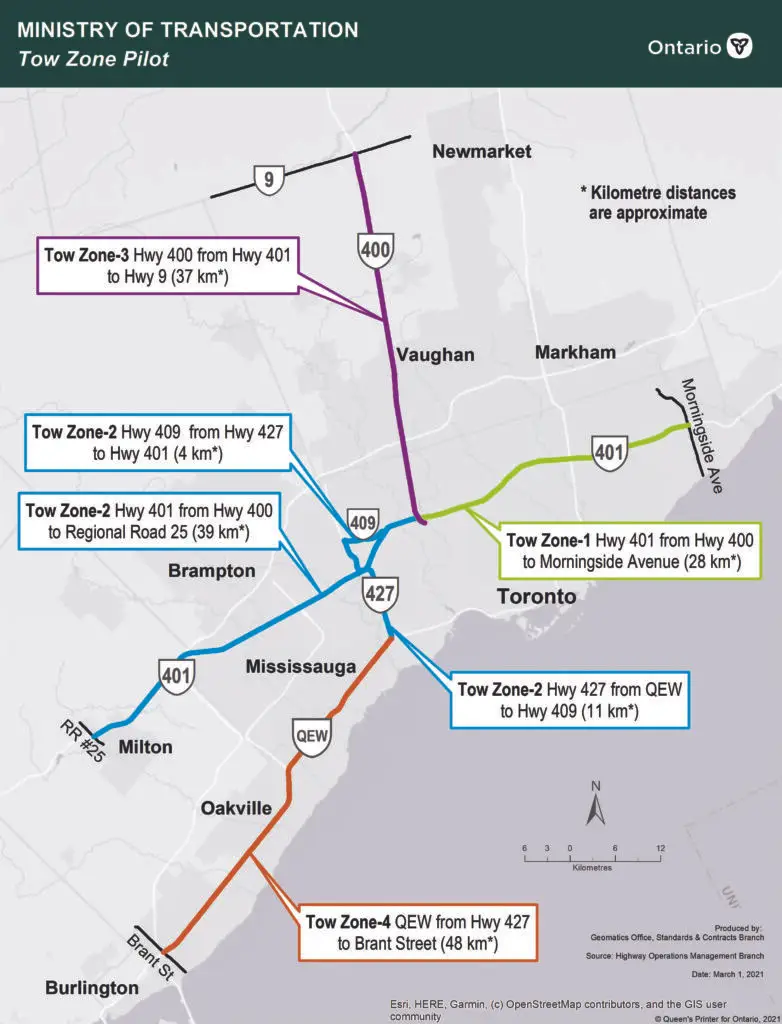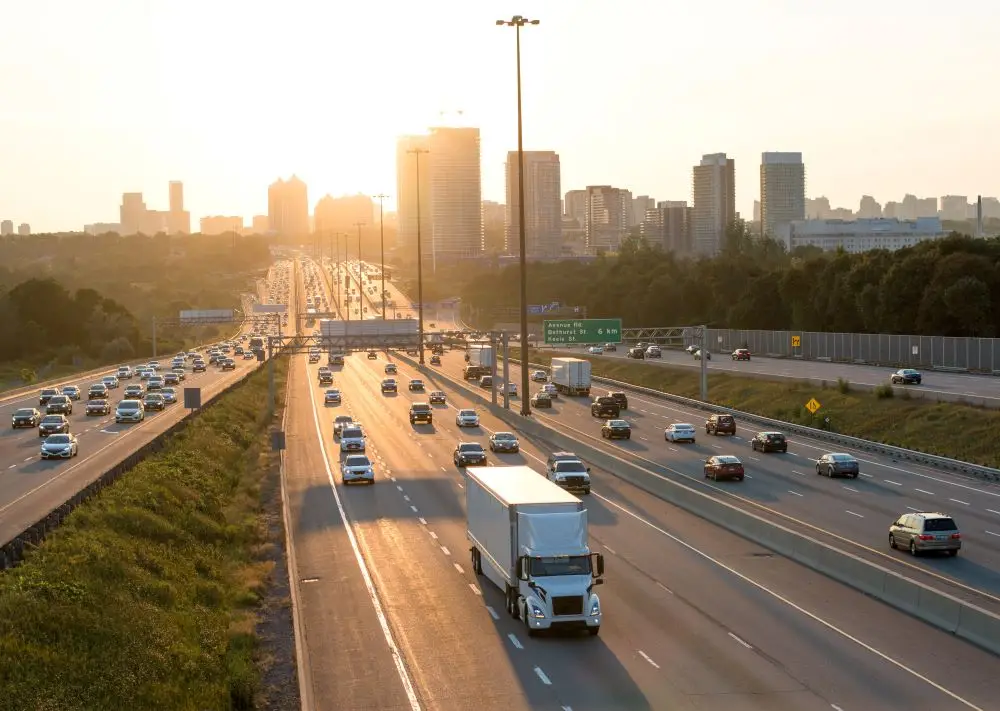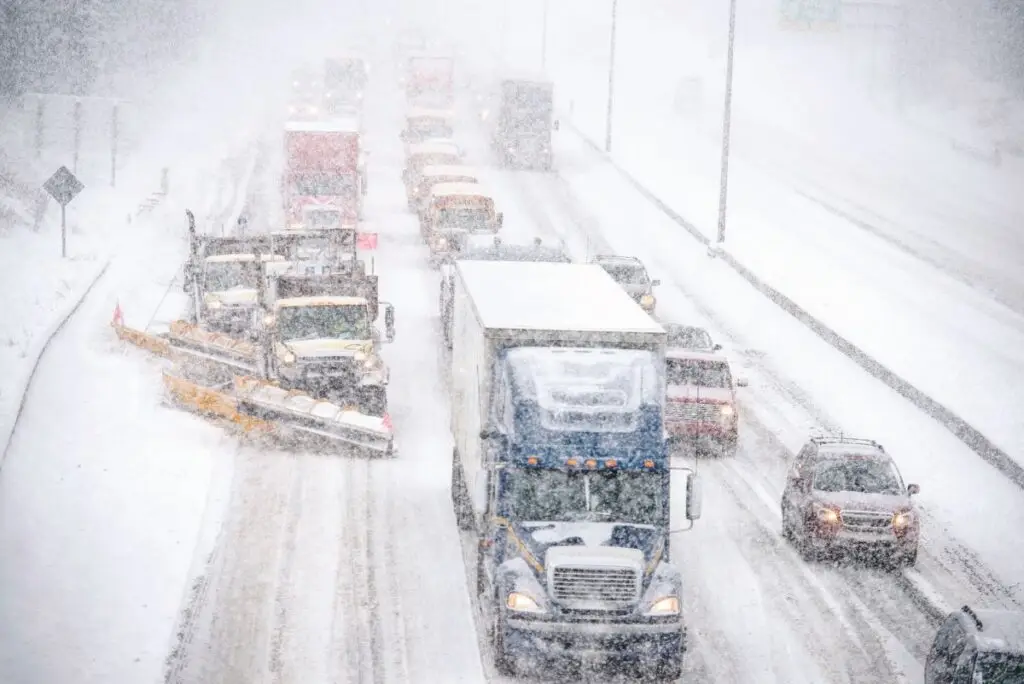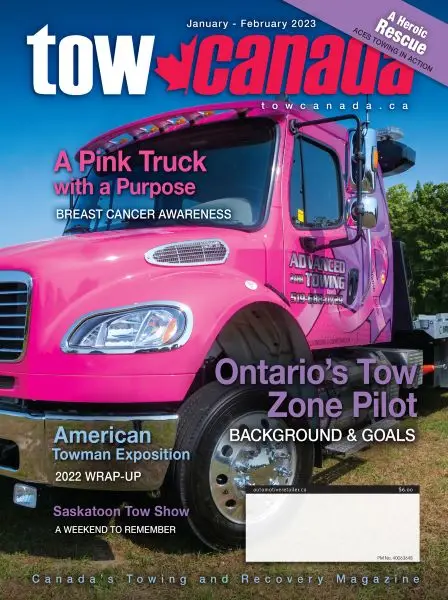When Ontario Premier Doug Ford stepped in front of the camera at a news conference on June 29, 2020, and announced the creation of a new provincial task force to overhaul the towing industry, nobody was questioning anymore whether something needed to be done.
by Kara Cunningham
For the towing industry in Ontario, the past decade has been a turbulent time. The industry has grown significantly due to increased congestion on provincial roads, and correspondingly, a confluence of exploitative practices, allegations of criminal activity, and growing levels of violence.
“More than 50 trucks have been set on fire, at least four men with ties to the industry have been killed and a law firm shut down after two arsons and a daytime shooting as operators compete for bigger slices of a lucrative segment of the industry known as collision towing or accident-chasing,”1 the Globe and Mail reported in 2020, along with most major Canadian news outlets.
Given that the towing industry has evolved with little to no provincial oversight or regulation in Ontario, this lack of oversight led to a proliferation of unsafe, predatory practices. This in turn resulted in a growing divide within the industry itself between legitimate and nefarious operators.
While most towing operators work within the boundaries of the law, the standard practice among some towers was, and still remains, to race to the scene of a collision in order to secure a tow before their competition—called “chasing” or “first-to-the-scene.” This creates unsafe road conditions for all users of the provincial highway system: the public, emergency services, and the tow operators themselves.
Inflated pricing was also an ongoing issue once a stranded motorist was provided a tow service (a tow service which more likely than not cannot be avoided). Confusing billing practices and collusion between towing and storage operators and related businesses have been used to prey on the public. Reports of systemic insurance fraud indicate that the towing and storage sectors are part of a complex network that has put customers at risk while increasing auto insurance premiums.
"These drivers are fighting over business the same way drug dealers would fight over drug turf.”

These drivers are fighting over business the same way drug dealers would fight over drug turf,” said Toronto Police Superintendent Steve Watts.2
And this was far from the only concern: “After a tow, unscrupulous operators also aim to hike revenues by tacking on fees, often through fraudulent charges. Unnecessary and non-existent repair work, bogus rehab claims and inflated bills have been well documented in the auto and towing industry.”3
Further, providing towing and recovery services on provincial highways poses a risk of danger to the public, emergency services, and towing operators. This risk is further exacerbated by instances of substandard vehicles used by some operators due to a lack of minimum vehicle requirements imposed by the province.
These practices discouraged legitimate operators, resulting in many of them deciding to shutter their businesses. The towing industry was at a crossroads and its reputation was at stake. That is why, since 2018, the provincial government has banded together with towing operators and other partners to bring about change and to effect a much-needed maturation of the industry.
"The towing industry was at a crossroads and its reputation was at stake.”
This collaborative group took action to strengthen provincial oversight, develop a regulatory model to increase safety and enforcement, enhance consumer protection, and eliminate criminal activity within the towing industry.
One of the first steps was the creation of a provincial task force, called the Towing Task Force, co-led by the Ministry of Transportation (MTO) and the Ministry of the Solicitor General (SOLGEN), with representatives from other ministries, the Ontario Provincial Police (OPP), and municipal law enforcement agencies. At the time, Premier Doug Ford noted that “Setting up this task force will help us bring together experts to develop ways to better protect drivers, operators, and inspectors.”4
The Towing Task Force built on the work done by the Quick Clearance Committee in 2018. It was made up of MTO, OPP, and industry stakeholders in response to several major commercial vehicle incidents wherein freeways remained closed for extended periods of time and related concerns. The task force engaged in consultation with the public and 70+ industry partners including automobile insurance companies, consumer groups, commercial business representatives, and towing industry representatives.
Based on these consultations, the task force came up with a series of recommendations including the creation of a joint forces operation between the OPP and municipal police services, the creation of a pilot tow program to trial a new way of operating on the busiest sections of highways in North America, the development of a licencing framework for tow truck operators, and the development of new legislation to establish a comprehensive provincial oversight model for the towing and storage sectors.5 As a consequence, in June 2021, Ontario passed the Towing and Storage Safety and Enforcement Act,6 and in December 2021, the Tow Zone Pilot (TZP) program was launched.
At the core of the TZP program are the goals of working in partnership with the towing industry to enhance public safety and reduce predatory practices. The program designates portions of the highway network within the Greater Toronto Area as Restricted Towing Zones (RTZ), and only designated Tow Services Providers (TSPs) may provide towing services within their RTZs. The pilot also introduced standard pricing by incident type.
"These practices discouraged legitimate operators, resulting in many of them deciding to shutter their businesses.”

By designating a specific TSP to each RTZ and stipulating response and clearance timelines, the unsafe practice of racing to be first at the incident scene has been virtually eliminated. Likewise, introducing standard pricing that is both recognized and supported by the industry at large, and posted publicly, has reduced uncertainty for stranded motorists and helps build public trust.
The program further supports the maturation of the towing industry by promoting the development of processes and standards. These in turn have been used to inform the development of the regulatory framework for the towing and storage sector. Minimum standards have been introduced to ensure that operators on the ground are properly trained and that vehicles used to provide towing services are safe and reliable.
With safety being at the core of the TZP’s mandate, participating towing companies are required to undertake stringent security screenings for each driver operating within the program. In turn, drivers are required to identify themselves to stranded motorists upon request and provide a fee schedule and any other pertinent program information when asked. TSPs are also required to affix government-issued stickers on their vehicles identifying them to enforcement officers as equipment that is permitted to be used in the program.
To ensure the success of the pilot program, MTO has built effective oversight and monitoring with respect to incident response and clearance times, customer complaints, and overall safety compliance. The oversight and monitoring tool support continuous improvement of the program in close collaboration with the participating TSPs.
The benefits of the pilot program became evident early during its operation, when on January 17, 2022, a significant winter storm hit the southern Ontario region, effectively halting traffic on the major highways and leading to a large number of incidents. MTO, emergency responders, and program TSPs worked quickly, efficiently, and safely to rescue stranded motorists. This was a coordinated response between the public and private sectors with success that could not have been achieved prior to the program.
Since then, the program has been progressing steadily, with all parties working together to bring about incremental improvements and new ways of making towing more efficient and safer on some of the busiest highways in North America. The TZP is now entering its twelfth month, and as such, the MTO, the OPP, the program’s TSPs, insurers, and other stakeholders are in the process of evaluating the program for year two and beyond.
Click here to read the Part II of the story, where Tow Canada takes the opportunity to speak to representatives from the MTO, the OPP, the towing industry, and an insurance provider about the program, its progress, and its future.
1 Hayes, M. (2020, June 29). “Doug Ford unveils task force for towing industry.” The Globe and Mail. Retrieved Sept 2, 2022.
2 Hayes, M. (2020, February 15). “In the GTA’s tow-truck turf wars, the race for profit leads to road rage, violence and intimidation.” The Globe and Mail. Retrieved Sept 2, 2022.
3 Ibid.
4 Office of the Premier. (2020, June 29). “Ontario Increasing Oversight of Towing Industry Provincial Task Force to Look at Improving Safety, Consumer Protections and Industry Standards.” Government of Ontario. Retrieved Sept 2, 2022.
5 Ministry of Transport. (2022, April 26). “Ontario’s towing task force: consultation and research.” Province of Ontario. Retrieved December 7, 2022.
6 Ontario’s Regulatory Registry. (2021, June 3). “Towing and Storage Safety and Enforcement Act (TSSEA) Regulations.” Government of Ontario. Retrieved Sept 2, 2022.
7 Thün, G; Velikov, K. (2010, July 5). “The Post-Carbon Highway”. Alphabet City. Retrieved December 7, 2012.

